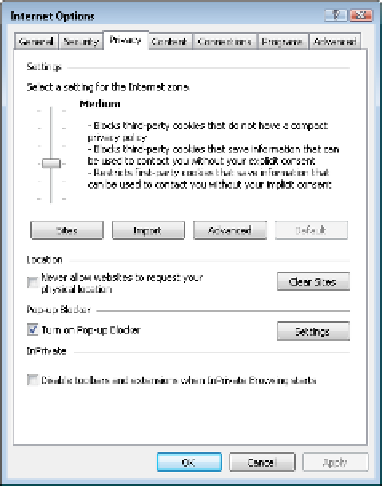Hardware Reference
In-Depth Information
other is a security threat: a virus or Trojan horse infection may copy a stored password
from a cookie and deliver it to someone who can then steal your login information for a site
to commit identity theft or some other type of fraud.
Cookies can be divided several ways. A
fi rst-party cookie
is placed on your computer by
a website you visit. For example, when you go to
www.amazon.com
, a cookie provides your
name so that the site can welcome you by name. A
third-party cookie
is placed on your
computer by an ad on a website, where the ad's parent company isn't related to the owner
of the website. For example, as you browse on Facebook, a third-party cookie may record
the ads you've clicked, indicating your potential interest in certain products.
A
session cookie
lasts only as long as your web browser is open. When you fi nish your
web-browsing session, session cookies are deleted. A
persistent cookie
stays on your hard
disk after you close the browser, either indefi nitely or for a certain number of days.
All browsers can be confi gured to control how your system stores each of the types of
cookies. You can create rules for cookie handling, set certain sites from which you'll allow
or deny cookies, and delete existing cookies. Each browser does it differently. Exercise 9.6
shows how it works in Internet Explorer 9.
EXERCISE 9.6
View and Delete Cookies in Internet Explorer 9
1.
Open Internet Explorer, and choose Tools
Internet Options.
2.
On the Privacy tab, drag the slider to Medium if it isn't already set there. Examine the
information that appears describing the Medium setting.







